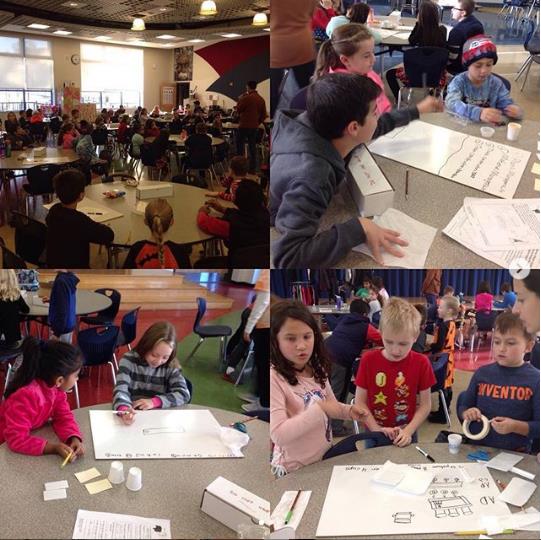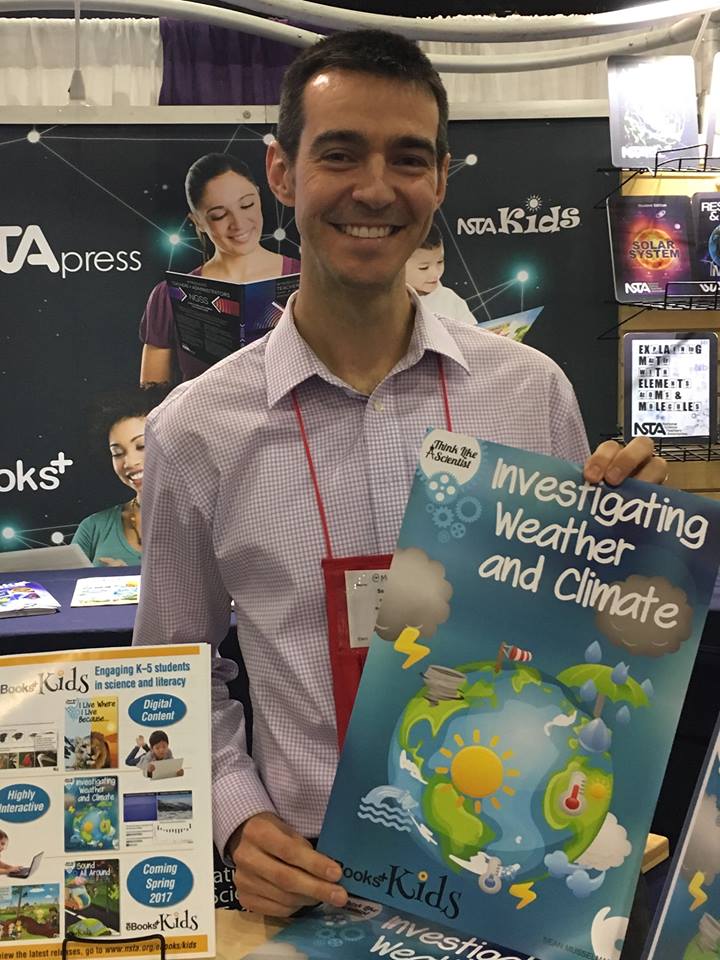One District’s Path to Improving Student Discourse
By Sean Musselman
Posted on 2018-11-15
If you’ve spent any time exploring the shifts in NGSS instructional practices you will understand the call for “less sage on the stage and more guide on the side.” While such a metaphor can be applied to a variety of science classroom settings, one that first comes to mind is the role of students and educators in scientific discourse. The publication Taking Science to School: Learning and Teaching Science in Grades K–8 by the National Academies identified four strands of proficiency that must be interwoven into successful science classrooms and learning. One of these strands is “participating productively in scientific practices and discourse.”
Discourse is at the forefront of several scientific and engineering practices, most notably Constructing Explanations and Design Solutions and Engaging in Argument from Evidence. Educators shifting their classroom and instructional practices may find themselves in uncomfortable spaces and roles at first, but so too will students! Norms and the capacity for constructing scientific explanations and critiquing or defending a claim do not happen overnight. Students of all ages often require scaffolds when being asked to share with peers for the first time. This includes students who are rehearsed in sharing strategies, but may be coming into contact with new peers and settings for the first time in a new academic year.
In Burlington, Massachusetts, where I teach, the need for improved student discourse across all the fields of study is a priority. Our district’s instructional coaches are committed to focusing their work on lifting classroom discourse and are using an adapted version of the table developed by Hufford-Ackles, Fuson, and Sherin (2014) to support educators’ exploration of student discourse in its many forms and levels.
 To introduce this instructional priority to our teachers, curriculum teams or “councils” met with coaches at the beginning of the year and participated in a protocol designed to highlight the practices that facilitate student discourse and engage teachers in peer-to-peer conversations much like the ones we aspire to achieve with our students. Educators independently reflected before sharing with one another on sticky notes how the science curriculum and instructional practices support each of the five facets of classroom discourse.
To introduce this instructional priority to our teachers, curriculum teams or “councils” met with coaches at the beginning of the year and participated in a protocol designed to highlight the practices that facilitate student discourse and engage teachers in peer-to-peer conversations much like the ones we aspire to achieve with our students. Educators independently reflected before sharing with one another on sticky notes how the science curriculum and instructional practices support each of the five facets of classroom discourse.
Teachers then organized their sticky notes on five posters (one for each facet of the discourse rubric) before working collaboratively to organize them into groups or patterns. This strategy was taken from John Antonetti who used a similar format to engage administrators during their own professional learning around the concept of Learning Walks. Teachers were then given the task of reflecting on how they and their colleagues support the particular facet in their classroom and school. Their groupings and strategies were ultimately shared with the entire council.
To further empower our teachers, we provide them with resources available online at no cost that have proven to advance student discourse . These include
- A copy of Burlington’s “Academic Levels of Classroom Discourse” table.
- Links to TERC’s Talk Science Primer and a copy of the Nine Talk Moves for “Productive Discussion” as shared on page 11.
- A copy of the “Talk Activities Flowchart” and links to the accompanying student talk protocol descriptions and teacher moves put together by Phillip Bell and his amazing team at STEMTeachingTools.org.
![]() Over the course of the year, teams of teachers in grade bands will meet to revisit and hone our units and lessons. The teachers will be asked to identify the level of classroom discourse being asked of the teacher and students, and consider and tweak lessons and units that are lower on the spectrum, preferably to levels 3 or 4 on our table (see discourse chart linked above). Additionally, the district’s improvement committee is exploring the use of tools, like learning walks, to get teachers into classrooms to observe peers in action to push student discourse to new levels. The work won’t be worthy of click-baiting, head-turning headlines in our news outlets, but it will heighten the faculty’s focus on student discourse as a linchpin experience in every science classroom and lesson.
Over the course of the year, teams of teachers in grade bands will meet to revisit and hone our units and lessons. The teachers will be asked to identify the level of classroom discourse being asked of the teacher and students, and consider and tweak lessons and units that are lower on the spectrum, preferably to levels 3 or 4 on our table (see discourse chart linked above). Additionally, the district’s improvement committee is exploring the use of tools, like learning walks, to get teachers into classrooms to observe peers in action to push student discourse to new levels. The work won’t be worthy of click-baiting, head-turning headlines in our news outlets, but it will heighten the faculty’s focus on student discourse as a linchpin experience in every science classroom and lesson.
 Sean Musselman is a K–8 science specialist for the Burlington, Massachusetts, Public Schools and a former middle school Earth and space science teacher. Musselman regularly supports Burlington classroom teachers with professional development and co-teaching investigations and engineering challenges. He is also a professional development facilitator for NSTA and a member of the Cambridge College science education faculty.
Sean Musselman is a K–8 science specialist for the Burlington, Massachusetts, Public Schools and a former middle school Earth and space science teacher. Musselman regularly supports Burlington classroom teachers with professional development and co-teaching investigations and engineering challenges. He is also a professional development facilitator for NSTA and a member of the Cambridge College science education faculty.
Note: This article was featured in the November issue of Next Gen Navigator, a monthly e-newsletter from NSTA delivering information, insights, resources, and professional learning opportunities for science educators by science educators on the Next Generation Science Standards and three-dimensional instruction. Click here to sign up to receive the Navigator every month.
Visit NSTA’s NGSS@NSTA Hub for hundreds of vetted classroom resources, professional learning opportunities, publications, ebooks and more; connect with your teacher colleagues on the NGSS listservs (members can sign up here); and join us for discussions around NGSS at an upcoming conference.
The mission of NSTA is to promote excellence and innovation in science teaching and learning for all.
Future NSTA Conferences
2018 Area Conferences
2019 National Conference
Follow NSTA
Disclaimer: The views expressed in this blog post are those of the author(s) and do not necessarily reflect the official position of the National Science Teaching Association (NSTA).
NGSS Teaching Strategies Elementary Middle School High School


